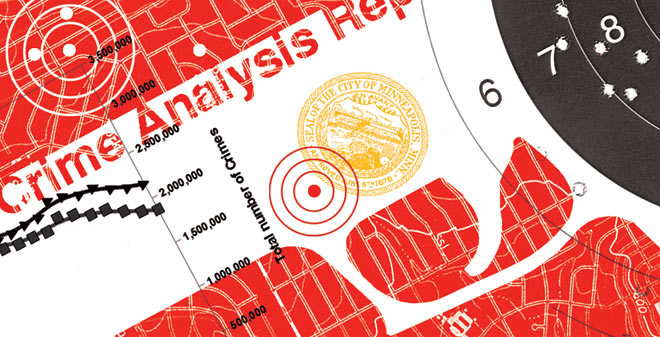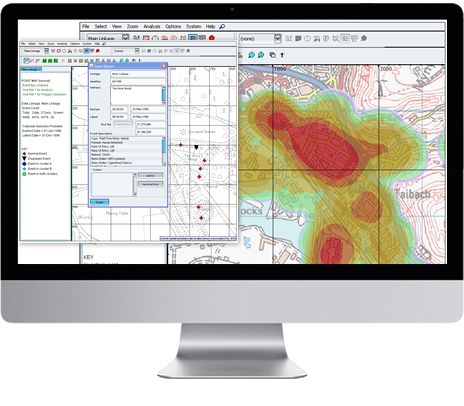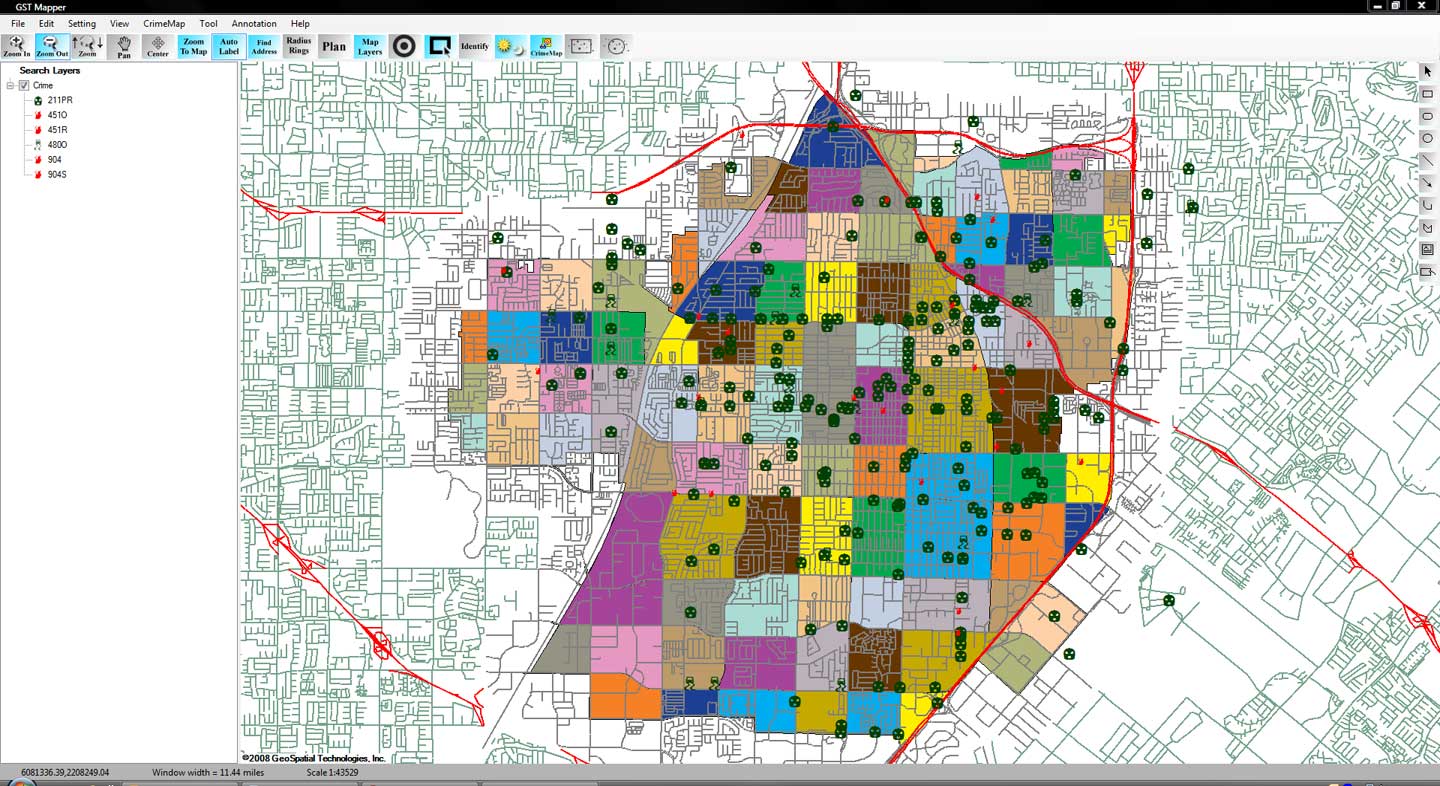Enjoy! Here are the five craziest crimes of the week!
Study: Violations of privacy rights by fusion centers are the exception, not the rule
Great 28 CFR Part 23 article from Indiana University – Purdue University Indianapolis discussing Jeremy Carter’s “Law Enforcement Fusion Centers: Cultivating an Information Sharing Environment while Safeguarding Privacy.”
See the article at http://news.iupui.edu/releases/2016/07/fusion-centers-privacy-concerns-carter.shtml
Police Data: Beyond 'black' and 'white'?

Published by Crime Tech Solutions
The notion of predictive policing is hotly debated. Some suggest that the technology removes the elements of racial bias in policing. Others claim that it does little to improve public safety. In fact, the predictive policing world took a hit recently when Milpita Police Department in California canceled a contract with software provider PredPol, suggesting that the tool offered little in way of ROI.
Predictive policing refers to the usage of mathematical, predictive and analytical techniques in law enforcement to identify potential criminal activity. Pulling in data from a variety of sources such as arrest records, calls for service, and geospatial (location) data, the promise of predictive policing offers law enforcement a statistical probability that a crime may occur in a particular location within a particular period of time.
 Advocates say ‘Great, let’s prevent the crime from happening’. Opponents say ‘The output is only as good as the input’. In other words, there are claims that a reliance upon historical data unduly influences the prediction. The position suggests that if police have tended to make arrests in Location A, then of course predictive policing will suggest patrolling Location A.
Advocates say ‘Great, let’s prevent the crime from happening’. Opponents say ‘The output is only as good as the input’. In other words, there are claims that a reliance upon historical data unduly influences the prediction. The position suggests that if police have tended to make arrests in Location A, then of course predictive policing will suggest patrolling Location A.
That argument has some holes, however; not the least of which is the very simple fact that historical data is the only kind of data that can ever exist. It has to happen before it’s data. The best indicator of future behavior is past behavior, says the pro-predictive policing side.
We think RAND Corporation puts it best when they state:
Predictive policing methods are not a crystal ball: they cannot foretell the future. They can only identify people and locations at increased risk of crime … the most effective predictive policing approaches are elements of larger proactive strategies that build strong relationships between police departments and their communities to solve crime problems.
 This same RAND statement was printed today by Dan Verton at MeriTalk. In an article entitled “Policing Data Sees Beyond Black and White“, Mr. Verton does an excellent job of discussing predictive policing in the context of current racial tensions in many US cities. The backdrop for the MeriTalk story is a new book by Manhattan Institute fellow Heather Mac Donald who, in her book “The War on Cops: How the New Attack on Law and Order Makes Everyone Less Safe“, uses data and data analytics to counter the argument that America’s police departments are engaged in a campaign of racial bias.
This same RAND statement was printed today by Dan Verton at MeriTalk. In an article entitled “Policing Data Sees Beyond Black and White“, Mr. Verton does an excellent job of discussing predictive policing in the context of current racial tensions in many US cities. The backdrop for the MeriTalk story is a new book by Manhattan Institute fellow Heather Mac Donald who, in her book “The War on Cops: How the New Attack on Law and Order Makes Everyone Less Safe“, uses data and data analytics to counter the argument that America’s police departments are engaged in a campaign of racial bias.
Our take is that predictive policing has merit. It is an important part of the law enforcement arsenal. Unfortunately, the term ‘Predictive Policing’ has also become a buzzword used by software vendors who aim to stake their claim in the law enforcement data analytics game. As a result of the gross overuse of the term, the predictive policing waters have become muddied.
Disagree? We entered the term into Google today and found about 350,000 unique pages.
We also think that the lack of ROI cited in Milpitra PD’s cancellation with PredPol is largely a result of costs. The promise of predictive policing, coupled with the over-hyped flame fanning of advocates (mostly vendors) has made the software relatively expensive.
 Nevertheless, it’s hard for law enforcement to deliver a strong predictive policing ROI if they were over sold on its’ merits to begin with. The good news is that the hype is on the downswing and reality is setting in: Predictive policing is not the next greatest thing. Instead, as we suggest, it is an important tool that law enforcement can use to combat and prevent crime.
Nevertheless, it’s hard for law enforcement to deliver a strong predictive policing ROI if they were over sold on its’ merits to begin with. The good news is that the hype is on the downswing and reality is setting in: Predictive policing is not the next greatest thing. Instead, as we suggest, it is an important tool that law enforcement can use to combat and prevent crime.
__
Crime Tech Solutions is a low price / high performance innovator in crime analytics and law enforcement crime-fighting software. The clear price/performance leader for crime fighting software, the company’s offerings include sophisticated Case Closed™ investigative case management and major case management, GangBuster™ gang intelligence software, powerful link analysis software, evidence management, mobile applications for law enforcement, comprehensive crime analytics with mapping and predictive policing, and 28 CFR Part 23 compliant criminal intelligence database management systems.

Why is it so hard to improve American policing?
Posted by RawStory.com The link follows…
https://www.rawstory.com/2016/07/why-is-it-so-hard-to-improve-american-policing/
From your friends at Crime Tech Weekly and Crime Tech Solutions (www.crimetechsolutions.com)
Our thoughts today are in Dallas…

June 24/16 Five Craziest Crimes of the Week
Enjoy! Here are the five craziest crimes of the week, courtesy of Newser™ and Crime Tech Solutions™!
courtesy of Newser™ and Crime Tech Solutions™!
(NOTE: Crime Tech Solutions is an Austin, TX based provider of crime and fraud analytics software for commercial and law enforcement groups. Our offerings include sophisticated Case Closed™ investigative case management and major case management, GangBuster™ gang intelligence software, powerful link analysis software, evidence management, mobile applications for law enforcement, comprehensive crime analytics with mapping and predictive policing, and 28 CFR Part 23 compliant criminal intelligence database management systems.)
The importance of 'gang intelligence' in law enforcement
Posted by Crime Tech Solutions
 Great article on how gang intelligence can assist law enforcement battle the problem of gangs and criminal activities. Read it HERE.
Great article on how gang intelligence can assist law enforcement battle the problem of gangs and criminal activities. Read it HERE.
Crime Hot Spots and Risk Terrain Modeling

By Tyler Wood, Operations Manager at Crime Tech Solutions.
One of the many functions crime analysis performs is the identification of “hot spots”, or geographical areas that seem to be hubs for criminal activity. Identifying these hot spots through best practices in geospatial crime mapping allows law enforcement to focus their efforts in areas that need them most. The trouble that law enforcement and crime analysts have encountered is displacement – the fact that once a hot spot is “cleared”, crime seems to pop up again in a different location. The good news is that the displacement is never 100%, so policing hot spots is important – it’s just not a magic bullet.
To solve this problem, a team at Rutgers University’s School of Criminal Justice set out to develop new methodologies that would result in peaceful outcomes that are built to last instead of merely temporary.
The difference between the old approach and the new approach is stark. Where police and analysts used to focus solely on geographical concentration of crimes, Risk Terrain Modeling examines the factors that contribute to such dense concentrations to begin with. Rutgers team have identified several characteristics of any given geographical location which may attract or generate crime. Their technology takes these characteristics, which include socioeconomic data, physical layout, types of local businesses, etc… and uses them to calculate the likelihood crime occurring in the area. This allows law enforcement to be proactive in the prevention of crime in these areas.

The technique seems to be highly effective. After a trial run in New Haven, CT, police were able to identify sixteen “statistically significant risk factors that underlie violent crime occurrences.” A high percentage of violent crime in New Haven during the test period occurred in locations already identified by the concept of risk terrain modeling. Though the technology is still new, it is clearly showing impressive results already.
Shutting down hot spots is important policing, and risk terrain modeling technology allows analysts and law enforcement officers to be even more proactive in their prevention of crime.
The author, Tyler Wood, is head of operations at Austin, TX based Crime Tech Solutions – an innovator in crime analytics and law enforcement crime-fighting software. The clear price/performance leader for crime fighting software, the company’s offerings include sophisticated Case Closed™ investigative case management and major case management, GangBuster™ gang intelligence software, powerful link analysis software, evidence management, mobile applications for law enforcement, comprehensive crime analytics with mapping and predictive policing, and 28 CFR Part 23 compliant criminal intelligence database management systems.)
Tulsa County Sheriff's Office to implement crime analytics software from Crime Tech Solutions
 In a press conference on June 23, 2016, Tulsa County Sheriff Vic Regalado announced that the Sheriff’s Office has received special grant funds – some of which will be used to implement specialized crime analysis and predictive policing software from price/performance leading software company Crime Tech Solutions™.
In a press conference on June 23, 2016, Tulsa County Sheriff Vic Regalado announced that the Sheriff’s Office has received special grant funds – some of which will be used to implement specialized crime analysis and predictive policing software from price/performance leading software company Crime Tech Solutions™.
The software, CrimeMap Pro™, is a comprehensive geospatial crime mapping and analysis system designed for crime analysts to manage a variety of incident databases and conduct a powerful array of mapping and analytical tasks. The crime analytics software.provides deep analysis of data that can be culled from disparate systems including arrest records, calls-for-service records, parolee and jail information, and many other data types.

That information is blended with sophisticated geospatial capabilities that will allow TCSO officials to quickly and effectively recognize crime patterns, hot spots, and other proprietary indicators to allow predictive policing, reduced crime, and improved resource allocation.
 (NOTE: Crime Tech Solutions is an Austin, TX based provider of crime and fraud analytics software for commercial and law enforcement groups. Our offerings include sophisticated Case Closed™ investigative case management and major case management, GangBuster™ gang intelligence software, powerful link analysis software, evidence management, mobile applications for law enforcement, comprehensive crime analytics with mapping and predictive policing, and 28 CFR Part 23 compliant criminal intelligence database management systems.)
(NOTE: Crime Tech Solutions is an Austin, TX based provider of crime and fraud analytics software for commercial and law enforcement groups. Our offerings include sophisticated Case Closed™ investigative case management and major case management, GangBuster™ gang intelligence software, powerful link analysis software, evidence management, mobile applications for law enforcement, comprehensive crime analytics with mapping and predictive policing, and 28 CFR Part 23 compliant criminal intelligence database management systems.)
Predictive policing to nail criminal minds
In February, Delhi Police tied up with the Indian Space Research Organisation for developing a predictive policing tool called CMAPS — Crime Mapping, Analytics and Predictive System. This, officers said, would arm the cops with relevant and timely data in the fight against organized crime.
The technology may not be as fanciful as it sounds and has already been tried in cities such as New York, Los Angeles, London and Berlin.
Coupled with MHA-approved call interceptions, it would give the police an edge over the criminals who were regularly coming up with unique ways to communicate, said an officer. The project, if completed, would use space technology to help the sleuths collect and assess data. The cops on the ground would be equipped with personal digital assistant devices, connected to a central processor storing records of more than 2 lakh criminals.
The technology, cops said, would thus allow real-time access to vital information at the crime scene itself, so that the officers don’t have to go back to the police station for filing a report. The system would convert every distress call into a digital message with the location of the caller being flashed through GPS.
Crime-mapping is currently a periodical process conducted manually by gathering electronic data at an interval of 15 days. The reports are prepared by the joint commissioners and forwarded to special commissioners (law and order), who then brief the police chief.